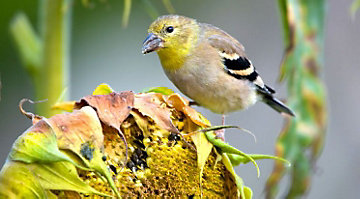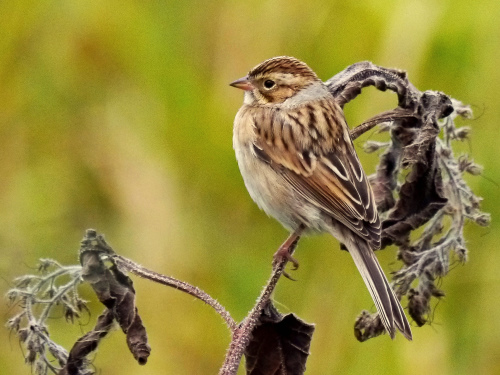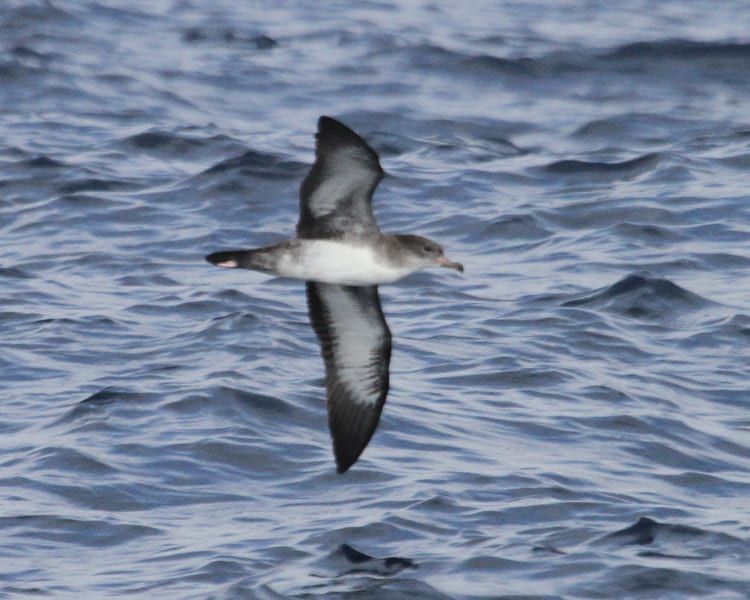As much as most of us like to feed and entertain the birds we find that feeding them can be a bit too steep for our pockets especially to young birders who have almost no way of getting money. Yet it doesn't have to be hard. You don't have to go to a local bird store and get want you want at what seems to be a ridiculous price. The ideas below are very cheap and most of them you can do it yourself at home.
Naturally Feed The Birds
 |
| Let nature feed the birds! |
Instead of spending the time and money on buying and refilling feeders, let nature do all the work for you. Plants provide birds with seeds, berries, nuts and nectar for your feathered friends. Choose plants that will live for a long time and are able to survive many temperatures and can grow in a large variety of different habitats. If you choose well, you can spend little on buying seeds and you'll get a steady food source for as long as decades.
Make Your Feed
I have tried making my own feed and have gotten some great results. Almost any combination of seeds, and fruit any birds would like, will work. You can use dried fruit, raisins, meal worms, sunflower seeds and leftover breadcrumbs. Making bird feed is a great time to spend together as a family.
To make suet, simply mix any of these together.
-Raisins
-Millet
-Sunflower seeds
-Birdseed
-Peanuts
-Bread Crumbs
-Anything else birds will eat.
To make it stick together you can use peanut butter or, if you have allergies, you can use oatmeal as well. Stick suet to tree bark or hang on from pine cones.
WARNING: Though many sources tell you to use meat, DON'T! The meat can actually kill the birds within hours. In fact, more birds die from eating meat than from hitting windows.
To make food for the humming birds mix 1 part sugar with 4 parts water. Red dye is not needed.
Birdbath
You don't need to buy a fancy one, any wide and shallow dish will do. If the water is too deep, put rocks on the bottom. In the winter it is a good idea to heat it, even a heat lamp will do!
Feeders
Go rummaging. Go to thrift stores and garage sales where you can get feeders cheap. Also, here are many cool feeder ideas on the internet and in birding magazines so I can't name all of them but I can name a few.
Muffin Tin Feeder
Hang a 2x3 muffin tin with cord or string to a tree-branch. Fill each tin with a different type of food. eg. one for oranges, one for jelly. If you want to be a bit more fancy, at perches and even a roof for your feathered friends to be protected from.
Pumpkin Feeder
Cut a pumpkin in half and fill it with seed. Add a few holes if you like and a perch.
Hummingbird Feeder
All you need is a bottle and a peanut butter lid! Take the cap of the bottle and glue it, face down, into the centre of the peanut butter lid. Make sure you can still screw the lid on; also make sure that the peanut butter lid is face down! With the bottle, on the bottom where the cap is (with the cap off at the moment) cut small triangles that will be covered up when the cap is on. Now fill up the bottle with your own hummingbird recipe and screw on the cap! When the feeder is running empty, simply twist the cap on the bottle and let some nectar trickle out through the triangles into the waiting peanut butter lid. If you feel artsy you can paint the bottle a nice deep red and saves you from having to put red or orange in the nectar.
If you do not want bees or bugs getting at your nectar put a piece of screen over the top of the peanut butter lid.
Variety
You can make so many different feeders with recyclable items. Simply use your imagination





















